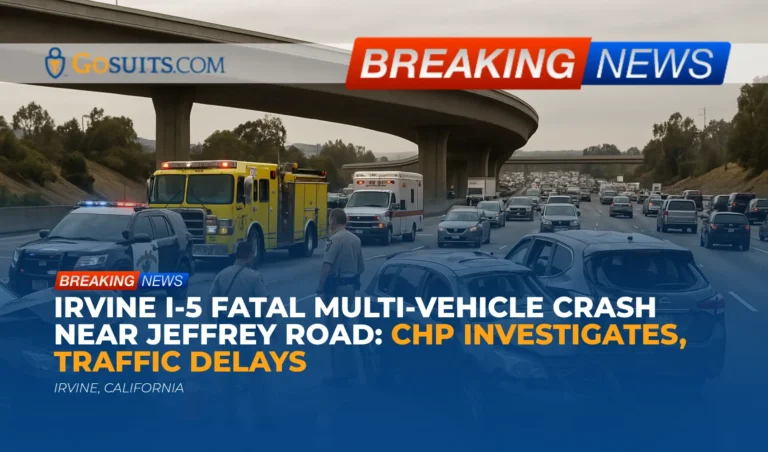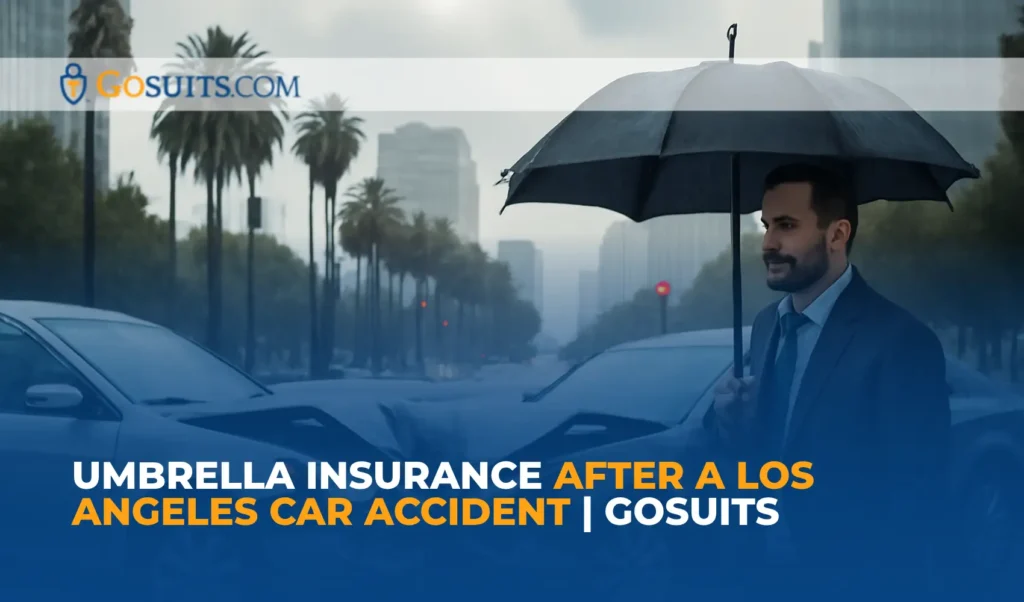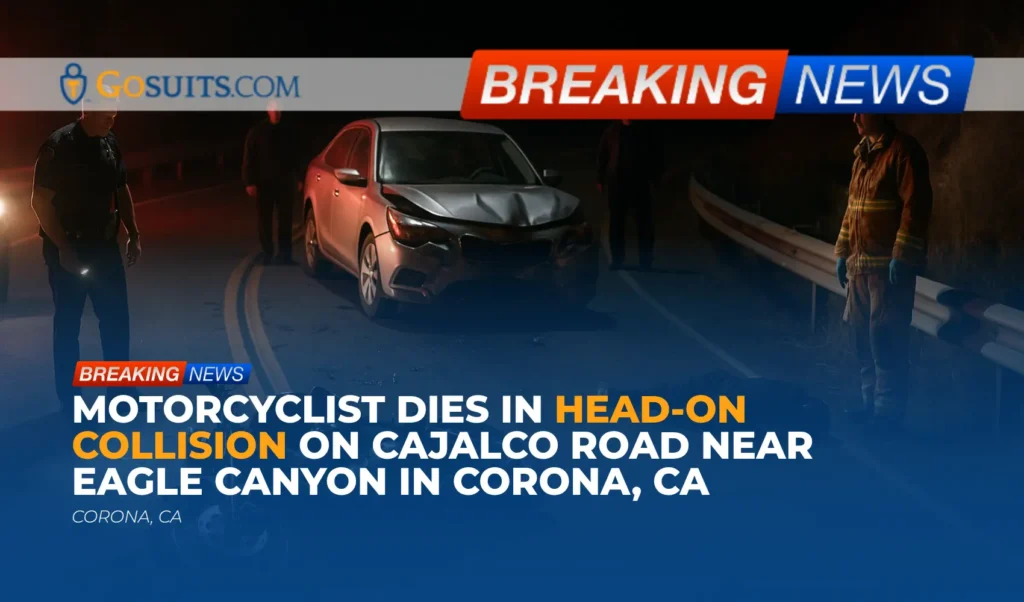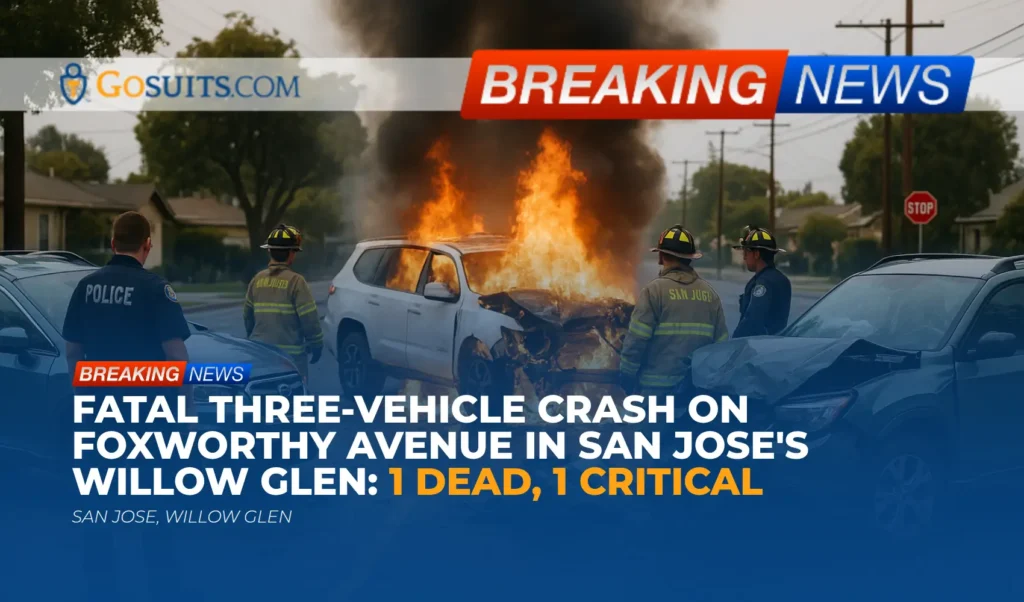- What is known about the Irvine I-5 multi-vehicle crash
- Immediate impacts on traffic and safety
- How fatal freeway crashes are investigated in California
- Key records families can request and where to get them
- Practical steps in the days after a fatal crash
- Understanding potential civil liability in multi-vehicle collisions
- Insurance issues and cautions after a deadly crash
- Wrongful death and survival actions in California: who may have standing and deadlines
- Preserving evidence: vehicles, scene data, and digital records
- Community safety context and crash statistics
- Where to get support in Orange County
- Commentary from Gosuits Irvine, CA Personal Injury Attorney
- Why timely action matters
What is known about the Irvine I-5 multi-vehicle crash
Authorities reported a fatal multi-vehicle collision on the northbound Interstate 5 in Irvine, just south of Jeffrey Road, on Monday at about 8:30 a.m. The California Highway Patrol responded, and one person was pronounced deceased at the scene. At the time of reporting, it was not yet clear whether others suffered injuries. The collision led to significant traffic delays and lane closures in both directions during the morning rush. By approximately 10:37 a.m., two lanes were reopened, although traffic remained slow and drivers were urged to avoid the area.
Details about the number of vehicles involved, causes, or contributing factors had not yet been released publicly as of the initial report. In situations like this, it is common for agencies to conduct a detailed investigation before releasing conclusions.
Immediate impacts on traffic and safety
Major freeway collisions in South Orange County, especially during morning commute hours, can create hazards that extend beyond the immediate crash scene. Secondary crashes can occur as drivers brake unexpectedly, and emergency response traffic patterns can be confusing for motorists unfamiliar with the area. When multiple lanes are closed, drivers may attempt last-minute lane changes, compounding the risk.
For real-time roadway conditions and closures on major state routes like I-5, Caltrans provides QuickMap, which displays live incident, lane closure, and traffic data statewide. See Caltrans QuickMap at quickmap.dot.ca.gov.
How fatal freeway crashes are investigated in California
When a fatal collision occurs on California’s state highways, the California Highway Patrol typically handles the investigation. The process may include documenting vehicle positions, skid marks, debris fields, and roadway conditions; interviewing witnesses; examining vehicle damage; and collecting electronic data from involved vehicles. Depending on complexity, specialized teams within CHP may participate in reconstruction and analysis.
Families and the community should be aware that investigations take time. Preliminary information can change as evidence is analyzed. While the public may be eager for answers, agencies prioritize accuracy and thoroughness. If a criminal aspect is suspected, separate procedures occur parallel to the crash reconstruction; however, any criminal process is distinct from civil claims focused on compensation for losses.
To verify active incidents and updates, the CHP maintains an online traffic incident log that reports calls for service and updates as they’re available. You can view the public log at cad.chp.ca.gov. For area office contact information, see the statewide directory at chp.ca.gov/find-an-office.
Key records families can request and where to get them
1) California Highway Patrol collision report
The CHP collision report is often the foundational document in understanding what happened. It typically includes party information, involved vehicles, diagram and narrative, and officer assessments. Eligible requesters usually include involved parties, their legal representatives, and next of kin. The report may not be immediately available; it can take days or weeks to finalize.
- Where to request: The CHP area office listed on the report or responsible for the scene. Find contact details at chp.ca.gov/find-an-office.
- What to have ready: Date and location of the crash, names of involved parties (if known), and the CHP report number if available.
2) Coroner records: autopsy and cause of death
In Orange County, the Sheriff-Coroner handles medicolegal death investigations. For next of kin, the coroner may provide certain records such as a final autopsy report (if conducted), cause and manner of death findings, and related documents after the investigation closes. Timing varies depending on testing and case complexity.
- Where to inquire: Orange County Sheriff-Coroner Division. Visit the Orange County Sheriff’s official site at ocsheriff.gov and navigate to the Coroner Division for instructions on records requests and family assistance.
- Death certificates: Official death certificates in California are issued through the California Department of Public Health’s Vital Records. Learn more at the California Department of Public Health website cdph.ca.gov and follow the Vital Records section for ordering instructions.
3) DMV accident reporting (SR-1)
California law requires the filing of an SR-1 form with the DMV within 10 days when a collision results in death, injury, or property damage above a certain threshold. This is separate from police reports. The form can be submitted by any driver involved, their insurance agent or broker, or legal representative.
- Form and instructions: See the California DMV’s SR-1 page at dmv.ca.gov/portal/dmv-forms/sr/sr-1.
4) Roadway and traffic control information
Information about lane closures, maintenance work, and traffic controls may be relevant to a crash analysis. Caltrans QuickMap provides contemporaneous information on closures and traffic conditions.
- Real-time info: quickmap.dot.ca.gov
5) Additional records that may be available
- 911 audio and dispatch logs: These may be requested from the agency handling the call. For state highway incidents in Orange County, CHP dispatch records may exist. Availability and redactions vary by law.
- Video evidence: Some freeway areas have traffic cameras managed by transportation agencies. Not all cameras record, and retention is limited. Early requests improve the chance of preservation.
- Toxicology reports: If the coroner performed toxicology, results may be part of the coroner’s final record, subject to eligibility and privacy rules.
Practical steps in the days after a fatal crash
The period after a deadly collision is overwhelming. Grief, logistics, and complex processes can collide at once. The following steps are general guidance to help families and loved ones orient themselves while information is still emerging.
- Designate a point person: Select one family member to coordinate communication with authorities and handle document intake. This helps minimize repeated trauma and confusion.
- Keep a contact log: Record dates, names, and numbers for each agency or person you speak with. Note promised follow-up dates.
- Collect immediate records: Request the CHP report when available, coroner case number, and any incident or case numbers provided by responding agencies.
- Preserve personal items and documents: Secure the decedent’s insurance information, vehicle registration, and any dashcam, phone, or wearable devices that might contain relevant data.
- Avoid vehicle disposal or repairs: If a vehicle is considered evidence, do not authorize repairs or salvage until a qualified investigator or attorney reviews it.
- Be careful with insurance communications: Before giving a recorded statement to any insurance company, consider consulting a qualified attorney to understand rights and obligations. What is said to an insurer can be used later.

Understanding potential civil liability in multi-vehicle collisions
In multi-vehicle crashes, responsibility can be straightforward or highly complex. Investigators assess numerous factors: speed, following distance, signal use, road surface, visibility, mechanical condition, and potential driver impairment or distraction. Sometimes a single driver’s conduct initiates a chain reaction; in other situations, several parties share fault. California’s civil system allows for apportionment of fault among multiple defendants when the evidence supports it.
Potentially responsible parties can include:
- Individual drivers: Motorists who acted unreasonably for conditions, failed to maintain safe following distance, or violated traffic laws may be liable for resulting harm.
- Employers of on-the-job drivers: Under vicarious liability principles, companies can be responsible for employee negligence occurring in the course and scope of employment.
- Vehicle owners: An owner who permits another to drive their vehicle may face liability within statutory limits, separate from negligent entrustment claims.
- Entities responsible for roadway conditions: In limited circumstances, public entities can be liable for dangerous conditions of public property, subject to strict notice and claims requirements.
- Product-related issues: If a vehicle or component failure contributed, analysis can explore whether a defect or maintenance problem played a role.
Every collision is fact-specific. The availability of video, witness statements, electronic data recorders, and physical evidence often determines how and whether liability can be proven.
Insurance issues and cautions after a deadly crash
Insurance coverage in a fatal crash can involve several policies: the at-fault driver’s liability coverage, the decedent’s own policy (including uninsured/underinsured motorist coverage), and possibly employer or commercial policies if a work vehicle was involved. California drivers must maintain minimum liability limits, but fatal collisions often involve losses far beyond statutory minimums. The California DMV provides information about financial responsibility requirements at dmv.ca.gov.
Common issues to anticipate:
- Recorded statements: Insurance adjusters may request statements early. It is usually prudent to consult an attorney first. Statements can be used against claimants, and incomplete information early in an investigation can lead to misunderstandings.
- Medical and funeral expenses: Policies vary on coverage and limits. Documentation is crucial.
- Policy limits tenders: In clear-liability cases with limited coverage, insurers may offer policy limits quickly. The timing and conditions of any release should be evaluated carefully in light of all potential claims and defendants.
- Uninsured/underinsured motorist claims: These may help when the at-fault driver has no insurance or inadequate limits. Procedures differ from third-party claims, and deadlines can be shorter.
If a person plans to pursue an insurance claim, it is advisable to consult a qualified attorney before speaking to insurance companies. A free consultation can clarify rights and potential pitfalls.
Wrongful death and survival actions in California: who may have standing and deadlines
California law provides distinct civil pathways after a fatal crash. While the facts of the Irvine incident remain under investigation, it may help families to understand general frameworks.
Who may bring claims
- Wrongful death action: Generally brought by close family members identified by statute, such as a spouse, domestic partner, children, and in some cases others who were financially dependent. The action seeks damages for the survivors’ losses, including the value of financial support and companionship. For the statutory basis and definitions, consult the California Codes on the official legislative site at leginfo.legislature.ca.gov.
- Survival action: Brought by the decedent’s personal representative or successor in interest to recover for harms the decedent suffered before death that the decedent could have pursued if they had lived.
Deadlines
- General statute of limitations: California’s statute of limitations for wrongful death is generally two years from the date of death. See California Code of Civil Procedure on the state’s official legislative website at leginfo.legislature.ca.gov for the current text of applicable sections, including Code of Civil Procedure 335.1.
- Claims against public entities: If a government entity may be implicated, the California Government Claims Act typically requires a written claim within six months for personal injury and wrongful death claims. The deadline is set by Government Code 911.2. Confirm current requirements at leginfo.legislature.ca.gov.
Because deadlines are strict and exceptions are limited, timely review of potential claims is important.
Preserving evidence: vehicles, scene data, and digital records
Evidence can change or disappear quickly after a freeway crash. Early preservation steps can significantly affect the accuracy of reconstruction and the ability to prove what happened. Consider the following areas:
- Vehicles: Modern vehicles often contain event data recorders (EDRs) that store pre-crash speed, braking, throttle, and other parameters. The National Highway Traffic Safety Administration provides information on EDRs at nhtsa.gov. Preservation requires holding the vehicle, preventing power loss or tampering, and arranging a professional download when appropriate.
- Scene evidence: Photographs of roadway markings, debris, fluid trails, and damage alignments are valuable. Even after the scene is cleared, nearby businesses or agencies may have cameras that captured the crash or traffic flow. Requests should be made as early as possible due to short retention policies.
- Phones and dashcams: Devices may contain critical video or GPS data. Preserve devices and back up data without altering timestamps or file metadata.
- Telematics and apps: Some vehicles and smartphones store trip data in manufacturer or cloud accounts. Screen and preserve relevant activity securely.
Community safety context and crash statistics
Multi-vehicle freeway crashes are a persistent safety concern nationwide. The Fatality Analysis Reporting System (FARS), maintained by the National Highway Traffic Safety Administration, tracks fatal crashes across the United States. Public summaries and data tools are available through NHTSA at nhtsa.gov. In recent national data, a substantial share of fatal crashes involve multiple vehicles, underscoring the importance of safe following distances, speed management, and attentive driving during congested periods.
While broad statistics can illuminate trends, every crash is singular. Accurate conclusions about the Irvine collision will depend on the official investigation and evidence specific to that event.
Where to get support in Orange County
After a sudden loss, families often need information and practical help from several organizations. These agencies and resources may be relevant in the aftermath of a freeway fatality in Orange County.
- California Highway Patrol (collision report and case updates): The CHP area office responsible for the crash location can provide guidance on how to request the collision report once available. Find the appropriate office and contact information at chp.ca.gov/find-an-office. You can also review the public incident log at cad.chp.ca.gov.
- Orange County Sheriff-Coroner (autopsy and coroner records): Families can seek information about the decedent’s case number, autopsy status, and how to request coroner records. Visit ocsheriff.gov and navigate to the Coroner Division.
- California Department of Public Health (death certificates): For obtaining certified death certificates, see the Vital Records information at cdph.ca.gov.
- California DMV (SR-1 accident report): If reporting is required, access the SR-1 form and instructions at dmv.ca.gov/portal/dmv-forms/sr/sr-1.
- Caltrans QuickMap (traffic and closures): For roadway conditions and closures that may affect travel to and from the crash scene or memorial sites, use quickmap.dot.ca.gov.
- Emotional support and crisis resources: Sudden loss can be traumatizing. A free, confidential national resource is SAMHSA’s helpline and online information about coping with grief and trauma at samhsa.gov. Local county health services may also provide bereavement referrals.

Commentary from Gosuits Irvine, CA Personal Injury Attorney
Our hearts are with everyone affected by the fatal collision on I-5 in Irvine. Mornings that begin as routine commutes can change lives in an instant, and we recognize the deep shock and grief that follow. The discussion here is offered for general educational purposes and to help the community understand what typically happens after a serious freeway crash.
In a multi-vehicle collision during rush hour, conditions can deteriorate quickly. Visibility, speed differentials, sudden braking, and lane changes may all contribute to the chain of events. That is why thorough investigation matters. It is appropriate to let the evidence guide conclusions rather than speculation. Agencies will examine the scene, vehicles, and available data to determine how the crash unfolded and whether any parties failed to use reasonable care under the circumstances.
From years of handling serious roadway cases, we have seen how insurance companies and corporate defendants swiftly mobilize to limit their exposure. Adjusters may reach out early, sometimes before families have even received basic reports. Offers can come before the facts are fully known. Recorded statements may be requested quickly, and what is said can be taken out of context later. When multiple vehicles and insurers are involved, each may attempt to shift blame to others or to the decedent. This is not a reflection of the family’s worth; it is a function of how claims are defended.
A no-cost consultation with a seasoned attorney can help clarify rights, identify next steps, and protect against common pitfalls. It is an opportunity to ask questions, understand timelines and potential claims, and decide on a plan for preserving evidence without any obligation.
Why timely action matters
There is a narrow window in which key evidence can be located and preserved. Acting deliberately and promptly can make a meaningful difference in the clarity of the record and the strength of any future claims. Here is what should be done and why it matters:
- Secure and preserve vehicles: Vehicles can contain crucial data and physical evidence. Preserving them before repairs, salvage, or disposal helps ensure that event data recorders, airbag modules, and mechanical components can be examined. Delays can result in permanent loss of information.
- Request official records early: Submitting requests for the CHP collision report and coroner records as soon as eligible helps avoid delays later. These documents often form the backbone of any civil claim or insurance process.
- Identify and preserve video: Nearby businesses, dashcams, and transportation cameras may have limited retention windows measured in days. Prompt outreach increases the chance of capturing footage before it is overwritten.
- Document losses comprehensively: Keeping organized records of funeral expenses, wage information, and out-of-pocket costs creates a clear picture of tangible losses. Contemporaneous notes about the person’s role in the family can help articulate intangible harms as well.
- Coordinate communications: Centralize contact with insurers and agencies to avoid mixed messages and prevent accidental waiver of rights.
- Consider a legal consultation first, before contacting insurers: Before making insurance claims or providing statements, it is wise to consult a qualified attorney. Insurance companies may use early statements against claimants, and coverage pathways can be complex. A free consultation can clarify next steps without risk.
- Beware of short deadlines: Statutes of limitations and administrative claim deadlines can pass quickly, especially if a public entity may be involved. Confirm timelines early by reviewing the California Codes on the official legislative website at leginfo.legislature.ca.gov.
Taking these steps promptly helps protect the integrity of the investigation and the ability to pursue available remedies later, if appropriate. Acting with care also reduces repeated trauma by minimizing the need to revisit the same issues again and again when documents are missing or evidence is lost.






